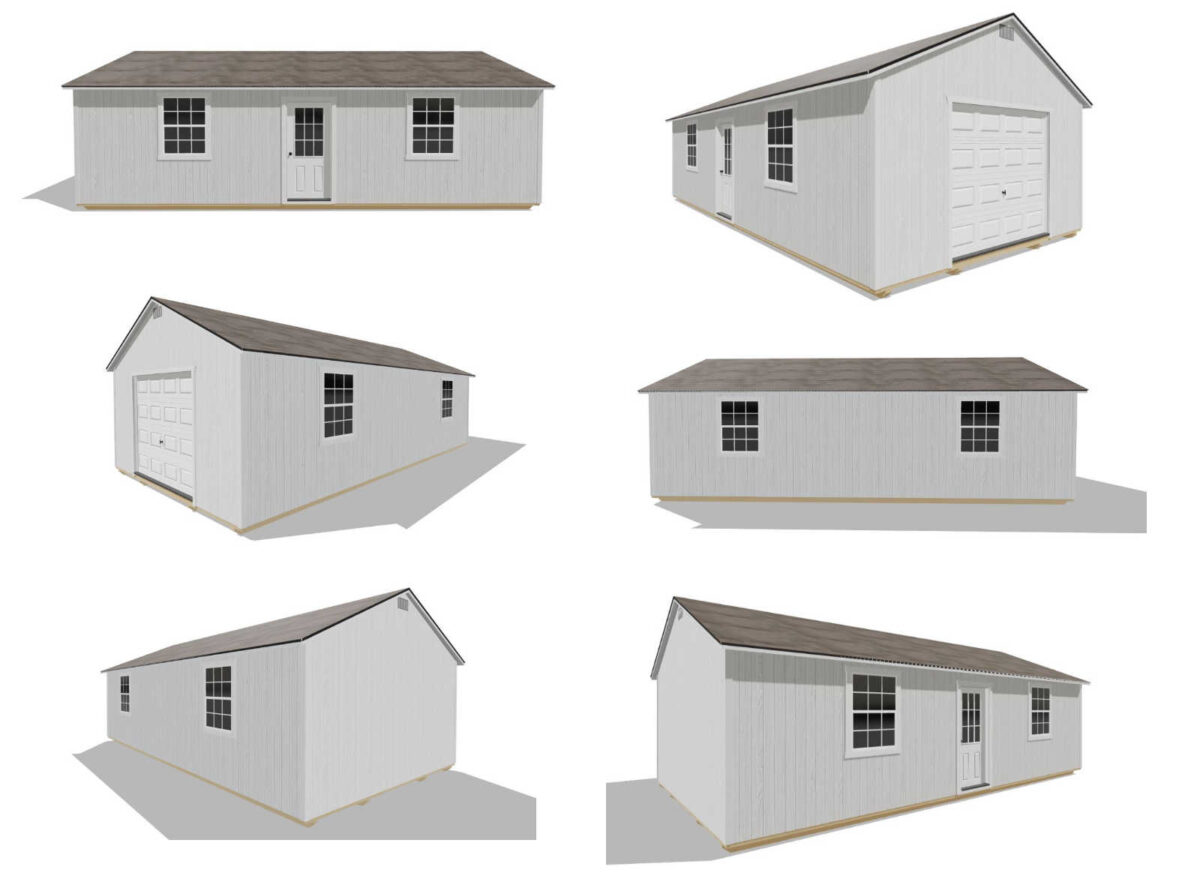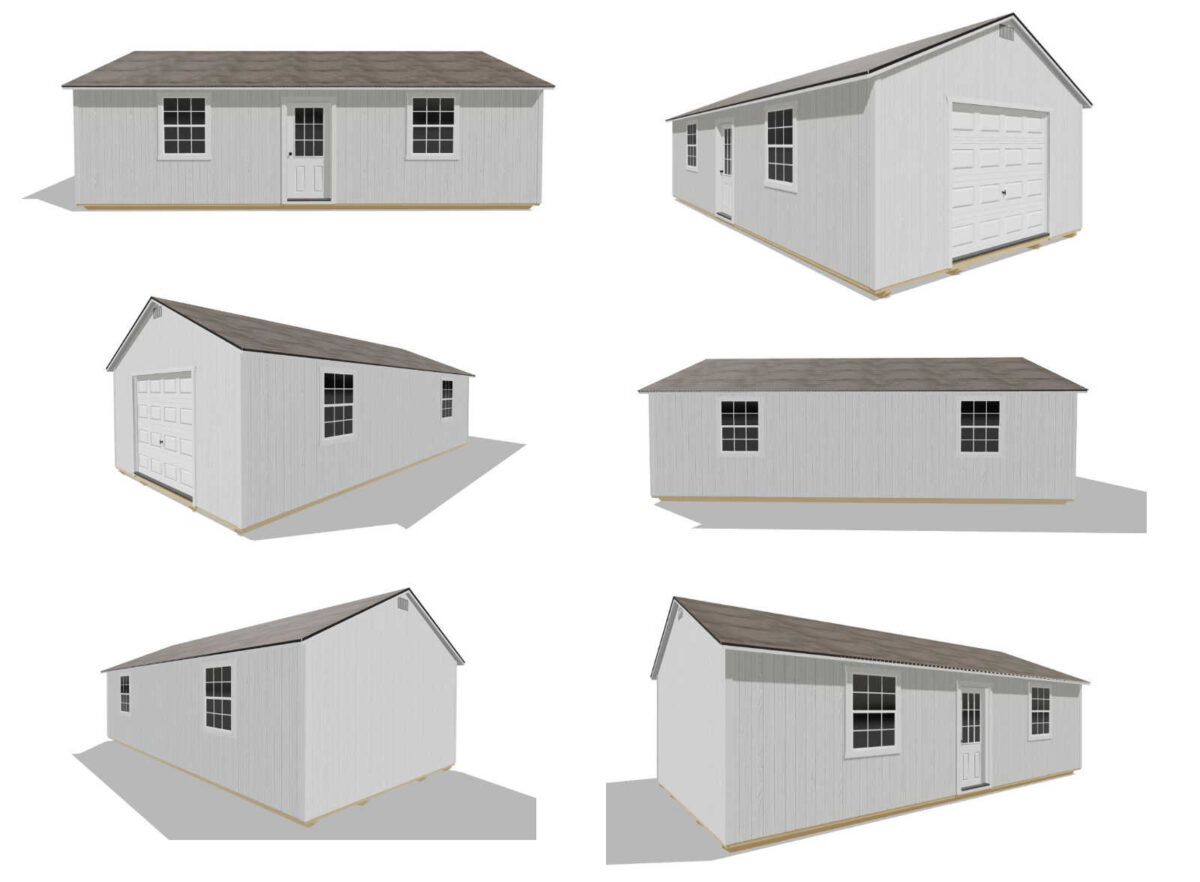
Final week, I submitted the entire data to get my constructing allow for my workshop that might be constructed behind our carport. The constructing was going to be 18′ x 32′, sitting 14 ft behind the carport. I needed to submit an in depth description of the constructing, plus a number of drawings. I submitted a lot bigger variations of those drawings that I’ve already proven y’all.

I additionally submitted this flooring plan of the constructing…


I additionally needed to submit a drawing displaying our property with present buildings and the place the brand new constructing was going to be situated. So I submitted this…


I believed I had lined the whole lot, however after I checked the standing of my allow yesterday, it stated it was on maintain as a result of I hadn’t submitted a basis plan. There was additionally this be aware: “New basis over 500 sf shall require engineer sealed design.” And my workshop was deliberate for 576 sq. ft. Ugh.
So there’s excellent news, and there’s unhealthy information. The unhealthy information is that there’s no manner I’m spending cash for an engineered basis for a workshop that’s being constructed by an area shed firm. So I’m having to scale back the scale of my workshop to get it as near 500 sq. ft with out going over. My workshop will now be 18′ x 27′. I’ll lose 5 ft of width on the constructing, which is an actual bummer, however I’m okay with it. The workshop will nonetheless be about 86 sq. ft larger than each my studio and the carport, so it’s a really good measurement. I’m okay with it, particularly if I can keep away from the expense and trouble of getting to have an engineered basis.
The excellent news is that this. The one factor that was holding me again from feeling assured that I may really act as my very own contractor on the kitchen addition was the muse. I stored listening to this time period “engineered basis” and I had no thought what it was. I frolicked for a number of days attempting to google and analysis and discover data and solutions, however I wasn’t discovering something useful. I attempted looking out on my metropolis’s allowing and inspection web site, and couldn’t discover any data. I couldn’t discover any solutions to my questions. What’s an engineered basis? Do I want an engineered basis? If I want one, the place do I’m going for that? I had so many questions, however may discover no solutions.
After which yesterday, on a totally completely different and unrelated undertaking, the knowledge I’ve been trying to find simply occurs to land in my electronic mail inbox coming instantly from a constructing plans examiner for my metropolis! Ha! Excellent! So right here’s what I realized…
What’s an engineered basis?
Merely said, an engineered basis is a basis that’s designed by an engineer. They keep in mind many components, such basis of the prevailing constructing (if there may be one), the situation of the muse of the prevailing constructing, the kind of soil that the constructing/addition might be constructed on, and many others.
This in all probability isn’t the case in each jurisdiction, nevertheless it’s my understanding that in my metropolis, town doesn’t have to examine engineered foundations as a result of the engineer is the one who indicators off on the engineered basis, and that’s filed with town. However once more, each county/metropolis could have completely different necessities.
When is an engineered basis wanted?
So as to know whether or not or not you want an engineered basis, you’ll have to verify with your individual native allowing and constructing inspection workplace. However to offer you a basic thought of when one is perhaps required or not, I’ll share the necessities particular to Waco, Texas.
Present pier and beam home:
If you happen to’re constructing an addition onto a pier and beam home, and the addition may even be pier and beam, the addition basis doesn’t have to be engineered so long as the prevailing basis has not failed.
Present slab basis:
This is similar as the prevailing pier and beam necessities. So long as the addition may have a slab basis, and the prevailing slab has not failed, the addition is not going to require an engineered basis.
Situations:
- An engineered basis is required if the addition may have a unique kind of basis from the prevailing construction. If a home has a pier and beam basis, however the addition may have a slab basis, an engineered basis is required. Or if a home has a slab basis, however the addition may have a pier and beam basis, an engineered basis is required. An engineered basis can also be required on an addition if the prevailing basis has failed.
- New foundations for outlets, storage buildings, and residential additions 500 sq. ft or bigger have to be engineered.
So these are the rules particular to Waco, Texas, as of the summer season of 2024. And for those who’re not in Waco, these tips may give you a basic thought or a leaping off level as as to whether or not chances are you’ll want an engineered basis in your addition or your accent constructing. However in fact, you’ll need to get the particular with your individual allow and inspection workplace.
Now that I’ve this data, I actually do really feel like I could possibly be my very own contractor. I really feel extra empowered with this data, and I really feel higher outfitted to decide. I’m nonetheless unsure if I’ll go along with an engineered basis or not for my kitchen addition, however at the least now, I do know what town requires. And if I select a pier and beam basis for the kitchen addition, it doesn’t require an engineered basis since (1) the prevailing home has a pier and beam basis, (2) the prevailing basis is in nice situation and doesn’t have any factors of failure, and (3) the kitchen addition is underneath 500 sq. ft.
Addicted 2 Adorning is the place I share my DIY and adorning journey as I rework and beautify the 1948 fixer higher that my husband, Matt, and I purchased in 2013. Matt has M.S. and is unable to do bodily work, so I do nearly all of the work on the home on my own. You can learn more about me here.







